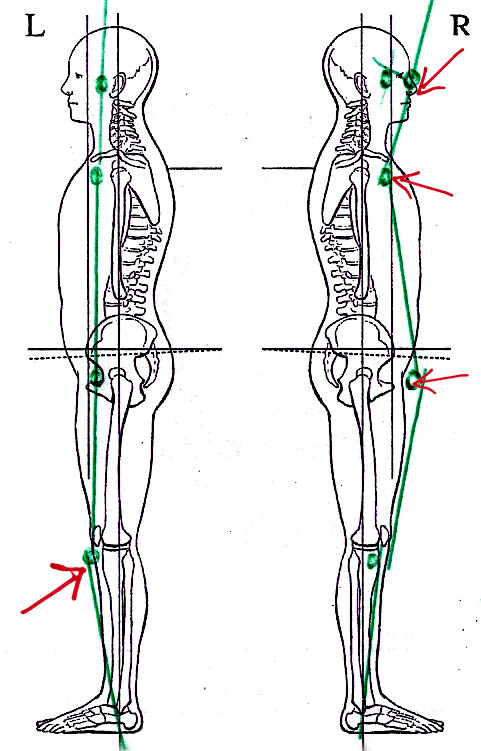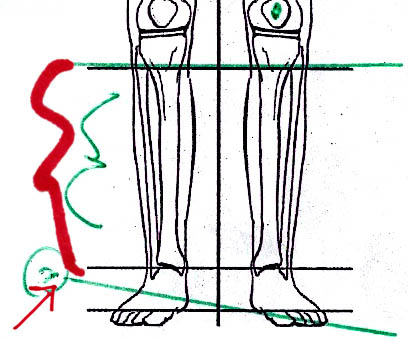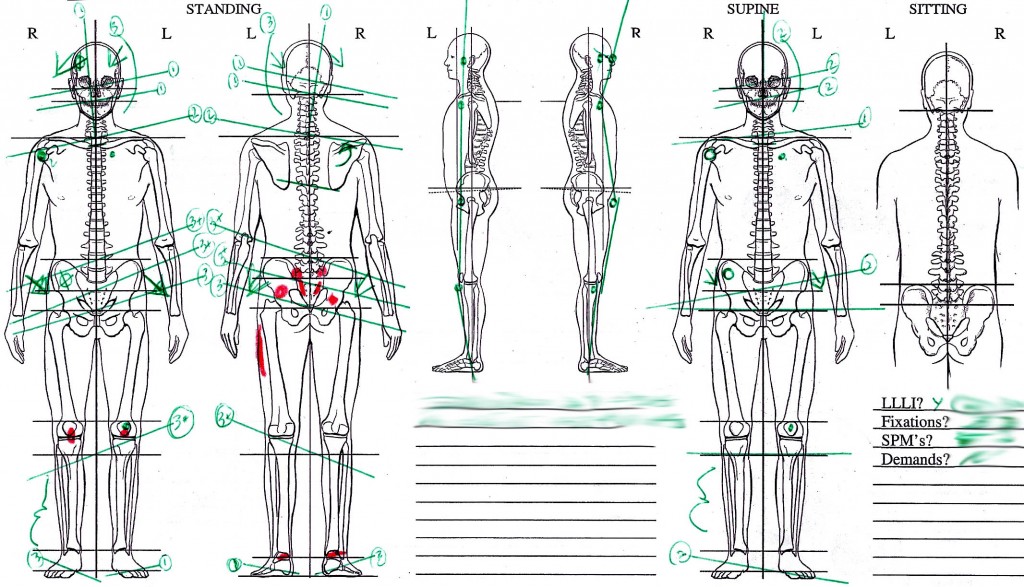
By
Coach Izzy
Those who know me personally, know the backstage aspect of my profession. Over the past few years, I have had the privilege of helping folks overcome painful conditions, return to activity, and get stronger and fitter. What more could a strength coach ask for? It is Nirvana!
I am grateful to the brilliant minds that shared their knowledge and guided my path. Though it would be difficult to name them all, I believe it fair to mention Paul St. John, Randall Clark, Kevin Wade, and Tracy Jones of Neurosomatic Educators Inc in Florida, who introduced me to the system that would forever change my approach to Assessment, Pain Therapy and Strength, and allowed me to bring hope and pain relief to many.
Trying to explain the system in one generalized umbrella is impossible. The situation gets more complex as I combine it with other modalities which in my experience, work well together. We are used to generalizing and singling out, but there are circumstances in which doing so undermines the subject and dilutes its essence.
At the request of my clients, I have put together a free report with the most important details. I have taken an excerpt from the document “How I Eliminated 35 Years of Back Pain in 3 Weeks” to illustrate a crucial point. (You can download the full report for free by CLICKING HERE)
This sample is a based on a real case and focuses on the assessment portion to help you understand why sometimes, we overlook the obvious. This man was suffering from injuries that should not be. We are about to find out why. If the pictures are too small for details, click on them to open them full size in a new window. Here you go!
From “How I Eliminated 35 Years of Back Pain in 3 Weeks”
Most of my clients wonder why I spend about two hours in our first appointment. It is hard to visualize what could possibly take two hours when all they need is some therapy.
Truth to be told, I never put my hands on anyone until I perform a thorough, conflict-free assessment and let the body reveal its ailments in its exquisite postural language. Doing otherwise is in my opinion, chasing symptoms and joining the cadre of madness. It requires a good investment of time and effort but the payoff is handsome. The body tells me what is protecting, where it is fighting to preserve the righting reflex, and more important, it tells me why! Only then a treatment plan can be put together.
Week one in Luke’s journey to healing started with his assessment, charting, and initial treatment. Luke marked in red all the areas that were in pain, past and present, and whether they still bothered him or not. Every bit of information was valuable. Here is his chart:
What is the first thing you notice about Luke’s assessment chart?
Don’t worry about the different segments we’ll go into them with more detail very soon. For now, all you need to know is that R stands for “Right†(as in right side), L stands for “Left†obviously, “Standing†means standing upright barefooted, and “Supine†means lying flat on your back.
You are probably wondering about all the lines. They represent the alignment of different structures. With that in mind, what would the tilted lines mean?
Exactly!
Structures not aligning properly! And you probably noticed there is barely a line resembling a straight trace.
No wonder poor Luke was a mess.
We will start by checking out the left portion of the chart, which is done in the standing position. These measurements indicate how the individual is aligned when looking from the front.
If your eyes were diverted to all the lines leaning towards the right, then you have an excellent eye. From head to shoulders, Luke was all compressed on the right side. His right shoulder was lower, his right hip was lower, and his right knee was also lower.
 Have you noticed how all the lines are parallel (as in going in the same direction) to each other EXCEPT the line at his feet? Yes, that’s a straight line since he’s standing on a level surface. That means there is compression at the lower leg.
Have you noticed how all the lines are parallel (as in going in the same direction) to each other EXCEPT the line at his feet? Yes, that’s a straight line since he’s standing on a level surface. That means there is compression at the lower leg.
Hmm…
Were the structures compressed? And if so, by what? What condition or ailment made the lower leg compress?
Or could it be simpler than that?
Could it be the structures were actually smaller, and they were smaller all along?
We’ll get back to that in a few.
Notice also that some areas have a circle or dot in front of them. That indicates the structure is more forward in one side than the other.
In Luke’s case, his right shoulder, right, hip, and right ear canal were forward. The left knee is also forward compared to the right.
Let’s move the side view. Notice the difference in alignment between left and right sides. The left line indicates an almost normal alignment but the right side indicates the shoulder, hip, and ear canal rotated forward, confirming the previous observations.
Not only is Luke compressing his right side with the tilt, he is also rotating in that direction!
 The combination of compression and rotation is known as torsion which happens to be a powerful force. Like every type of mechanical force (as a result of gravity) acting on our bodies, torsion is part of our daily living but it becomes destructive when it becomes excessive with overuse or overload. No wonder Luke was having issues with his discs.
The combination of compression and rotation is known as torsion which happens to be a powerful force. Like every type of mechanical force (as a result of gravity) acting on our bodies, torsion is part of our daily living but it becomes destructive when it becomes excessive with overuse or overload. No wonder Luke was having issues with his discs.
So there’s the root of the problem huh?
Nope!
Sorry, try again.
The tilting, rotation, disc degeneration, herniation, bulging, etc. are merely symptoms!
WHAT???
You heard me right; they are merely symptoms of mechanical wear. Luke never sustained direct or disabling trauma to the back, and lifting that box was nothing out of his ordinary activities. Luke’s body didn’t wake up one day thinking “Ya know? Let’s give Luke a hard time and start messing up those discs, yeah, that ought to be coolâ€.
Our bodies don’t do things capriciously and there’s always a reason they develop conditions and react in specific ways. That we fail it to see why and scratch our heads wondering: “What the Heck?†is a whole different issue; and one that will keep us occupied as long as we have presence in this world.
To blame age, well, that makes as much sense as blaming burgers for the obesity problem in our country. We seem to have forgotten the majority of joint trouble is caused by overuse, but we only focus on damage resulting from trauma.
As we age, our joints exhibit more wear, but that does not necessarily mean they will be inflamed or in pain. There are people in their 80s still active and sporting healthy joints. There are also folks in their 40s who already have a joint replacement, without ever being involved in a traumatic event!
What makes that difference?
In Luke’s case, the pain was in his left for as long as he remembered. If age were that significant a factor, his right side would be bearing the consequences but that was not the case. The difference in mechanical wear was too great to be attributed to age alone.
So, what would cause more wear on his right spine and left sacroiliac joint?
Simple, more force!
Luke’s left sacroiliac structures and right spine were bearing a lot more force than their counterparts. That simple.
But we are not done, back to Luke’s chart.
The panel on the right is similar to the panel on the left, except the measurements are taken in the supine (lying down, face up) position. Notice how he stays still compressed and rotated to the right? He is lying down; he is no longer fighting gravity nor has high demands on his righting reflex. Yet his body is acting as if he still were!
We are almost there folks…
Notice the lines at his lower body. If you notice the lines at his feet, knee, and top of the femur (thigh bone) the only distorted line is the one at his feet, which is tilting left.
So what’s that indicating?
Compression of the right lower leg structures (tibia, fibula). Where did we see that before?
Oh yeah, when he was standing up!
Does that mean the lower leg remains shrunken when lying down?
Why not? Could it be that the right lower leg was not shrunken but was smaller all along?
Why does such straightforwardness fail to get our attention?
Is it too simple perhaps?
And therein is the problem. Luke had conflicting information about the symmetry of his legs. Some health professionals told him it did not exist; others told him it did not make a difference.
Again, too simple of an issue to explain the magnitude of his problems?
If we pay close attention, we will realize that with few exceptions, our bodies exhibit asymmetries, so why would our legs be the exception?
How can something so seemingly minor as a leg length discrepancy cause so many problems? Well, let’s take a deep breath and start uncovering the simple and obvious.
…
The full story is detailed in the report which, again, you can download for FREE anytime.
I also have some awesome news!
Last week, the crew of Neurosomatic Educators Inc. made an excellent presentation on how certain innate conditions affect children, not just in the classical musculoskeletal department, but also in the learning and digestion departments. They also show you how they correct it, and the best part, they show you their documents and evidence!
It was too good of a presentation with mind-blowing information to keep it under wraps!
I have been given their permission to share this presentation with you in a 3-article series. This article and the free report will make it easier for you to to understand their presentation and take the proper steps.
I hope you are as excited as I am! Click HERE to go to the first installment of the series.
I’ll see you on the exercise floor!

